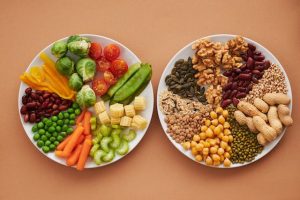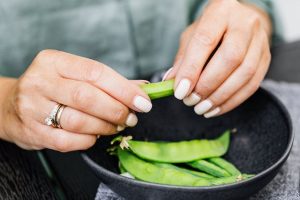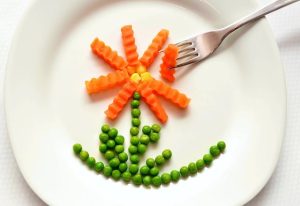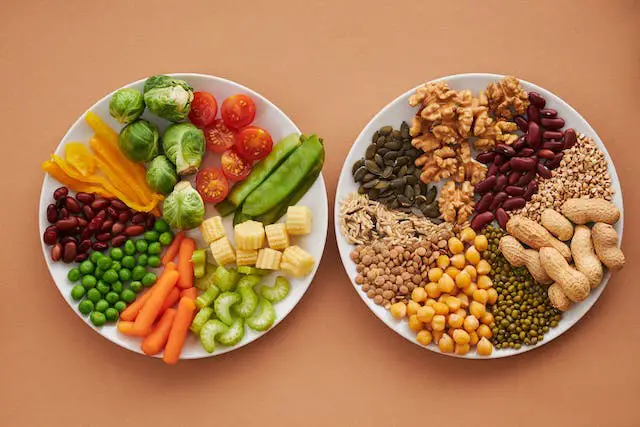Plants : May Provide You With More Iron Now
Plants May Provide You With More Iron, According To A New Discovery. An expert in nutrition weighs in.
Because it forms red blood cells, which carry oxygen, supports organ function, and aids in vital growth and development, ron is essential to human health. Nonetheless, more than 1.2 billion people worldwide suffer from iron deficiency anemia.
But it looks like the John Innes Centre researchers may have found a way to address what the WHO considers to be the greatest nutrient deficiency in the world.
Plants

Under the direction of Professor Janneke Balk, scientists were able to pinpoint the genetic regions that cause high-iron mutations in plants like cereals and peas. This finding is a major step toward using iron-fortified crops to address the global health issue of anemia.
“This research has many exciting potential applications, but the most exciting one is probably that understanding these mutations may help develop gene editing techniques to boost iron levels in a variety of crops,” a statement from Balk read.
Increased iron content in plants
This study, which was published in The Plant Journal, is essential to the fight against iron deficiency anemia, a condition that is particularly common in women and girls worldwide and is made worse by the reduction in meat consumption brought on by worries about climate change. Reduced red blood cells from iron deficiency anemia impact the body’s ability to store and transport oxygen.
Plants
Using RNA sequencing, the research team was able to determine which genes were expressed in high-iron pea plants and compare them to normal plants.
They identified the precise mutations and where they were located on the pea genome through computational mapping and plant experiments.
This discovery has more ramifications than just peas. “We can start making advancements in both scientific understanding and practical improvements in producing food with higher more bioavailable iron content now that we have identified these mutated genes,” Balk stated.
The understanding of these high-iron phenotypes opens the door to the improvement of food’s nutritional value through biofortification.
Plants

Breeding pea shoots with ten times more iron and creating natural iron supplements free of chemical substitutes are two potential uses. Furthermore, the fact that these genes are conserved throughout the plant kingdom raises the prospect of biofortifying other crops, such as barley and wheat.
These mutations’ discovery answers a long-standing scientific enigma. For over 30 years, research has been focused on the two high-iron pea varieties, which are essential to comprehending plant iron transport. This discovery was made possible in large part by the completion of the pea genome’s first draft four years ago.
“I have spent 20 years working in the field of iron homeostasis in plants, and every conference I attended or paper I read mentioned these two genes, but the people did not have the mutations,” said Balk.
The fact that the seeds from one of the mutants lose viability after a few years made this crucial to the accomplishment of our research, the researcher explained. “It demonstrates the critical function of historical collection preservation and seed banks.”
How to use plants to get enough iron
The identification of high-iron grains and peas may lessen the need for iron supplements by providing a more naturally occurring, bioavailable source of iron.
Plants absorb from the soil
The John Innes Centre’s researchers noted that their findings are especially pertinent given the global shift in dietary habits, which is placing an increasing focus on plant-based diets and sustainability.
Contrary to popular assumption, meat is not the only or even the best source of iron. A range of plant-based foods can also help maintain healthy iron levels without posing any health risks.
Plants

According to Anna Herby, DHSc, RD, CDE, a Nutrition Education Specialist with the Physicians Committee for Responsible Medicine (PCRM), there are benefits for specific populations from the research conducted at the John Innes Centre.
According to Herby, “This discovery may prove beneficial for individuals with elevated iron requirements, such as athletes, expectant mothers, kids, patients with gastrointestinal disorders that hinder iron absorption, or patients who have experienced substantial blood loss.”
According to Herby, “in these situations, extra iron may be required because of either an increased need, a decreased capacity to absorb iron, or a loss of iron through blood.” “If the high iron grains and legumes are easily obtainable, this discovery may lessen the need for supplementation in these situations.
In which of the following forms is iron
She does, however, also note that people who eat a balanced plant-based diet usually get adequate iron, suggesting that not everyone needs to make special high-iron modifications.
According to research, people who eat a vegetarian diet in developed nations do not have higher rates of iron-deficiency anemia than people who eat an omnivorous diet, according to Herby.
Legumes (lentils, soybeans, white beans, kidney beans, black beans, chickpeas, peas); nuts and seeds (think pumpkin seeds, tahini, sunflower seeds, hemp, and flax seed); and whole grains (quinoa, brown rice, oats, and fortified cereals) are some of the best sources of iron, according to Herby.
Plants
Broccoli, some dried fruit (apricots, figs, raisins, and prunes), dark leafy greens (like collards and Swiss chard), and blackstrap molasses are also excellent providers of iron.
Herby states that while meat, particularly red meat, contains iron, it is not the best food source of iron because it is linked to chronic illness.
More broadly, eating a balanced plant-based diet should include consuming foods like cereals and high-iron legumes. For the best iron absorption, Herby advises avoiding dairy and eggs, which inhibit iron absorption.
How to protect plants from rats
“As the phytates in coffee, tea, and cocoa can reduce absorption, it’s also a good idea to leave a few hours between consuming caffeinated beverages and chocolate and eating iron-rich foods.”
Vitamin C supplementation is essential for increasing iron absorption, and this also holds true for the newly discovered high-iron grains and peas. “A tasty way to include these foods in your diet would be to make a veggie stir fry or a whole grain noodle dish with tomato sauce and peas,” suggests Herby.
READ MORE:
1. Health and Fitness Tips for You
2. Upcoming New Movies
3. Get New Jobs Directly From Companies FREE Visa
4.Latest News of Cryptocurrency and Bitcoin
5. Real Estate Business for you
6. Latest News
7. Best Insurance Policy for Everyone
READ MORE:
- 1. Strategic Management Process: Top5 Jobs In Dubai FREE VISA Apply Now
- 2. Vancouver Time fighting for $12,000 in travel insurance Nightmare FREE
- 3. DIABETIC DIET : A PROFESSIONAL’S GUIDE TO A WARM AND WELL-BEING
- 4. NICOLAS CAGE STATES : HE HAS 3 OR 4 MORE MOVIES LEFT NOW
- 5. EMPRESS CRACKS: FOR THE FIRST TIME SINCE APRIL
- 6. DESPITE MEANING: DESPITE HIGH RATES, MORE US HOME BUYERS ARE WILLING TO BUY
- 7. A 44-YEAR-OLD BOSTON WOMAN WAS KILLED BY A SHARK ATTACK IN THE BAHAMAS WHILE ON VACATION







